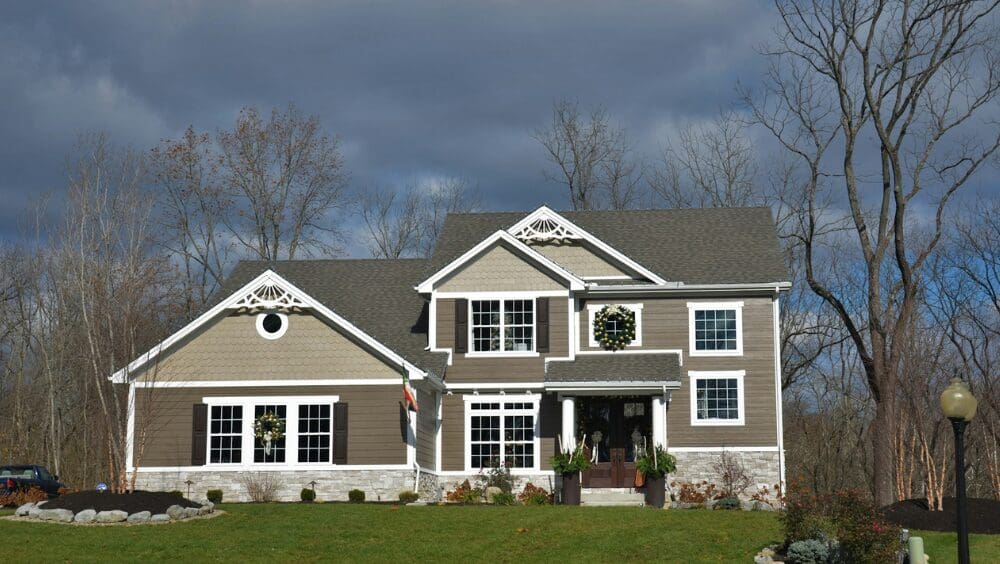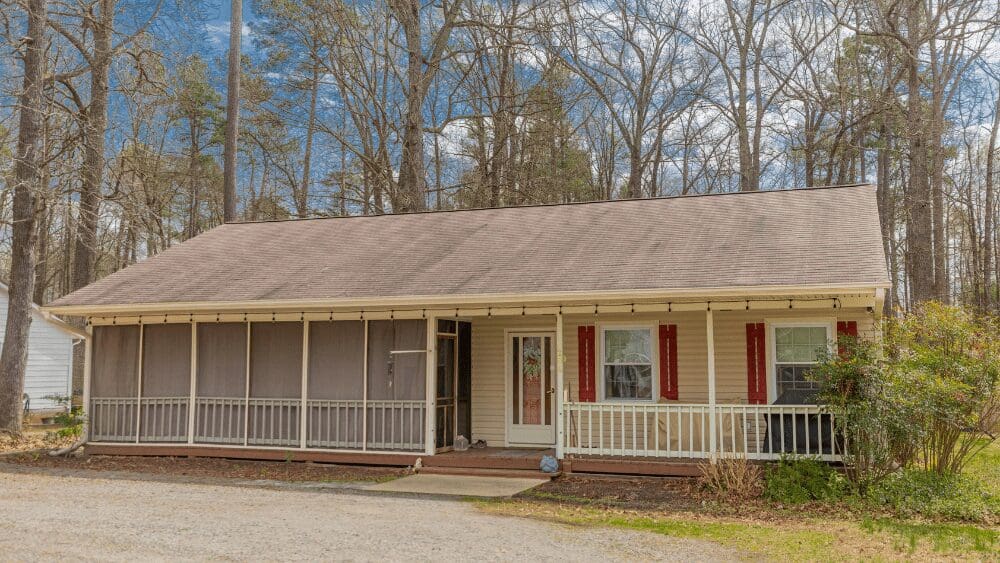
From cocktail parties to backyard barbecues, it seems like everyone around you is talking about how hot the real estate market is. So does that mean you’re in a buyer’s market or a seller’s market? Like stock prices, the real estate market fluctuates. Think back to the quiz you aced during 10th grade economics with Mrs. Patil: supply and demand. Like weights on opposite sides of a balance scale, a change to one end tips the scale’s balance, affecting the other. When one — supply or demand — outweighs the other, you have a market imbalance. In real estate, that imbalance translates into either a buyer’s market or a seller’s market. An ample supply (lots of homes for sale) and limited demand (fewer buyers) leads to a buyer’s market. Conversely, lack of supply (fewer homes for sale) and abundant demand (lots of buyers) results in a seller’s market. When you’re selling, the type of market you’re in makes all difference to your bottom line. It can affect: To help us understand both buyer’s and seller’s markets, we spoke with top real estate agent Kim Rock. The 13-year industry veteran has a track record for selling homes fast — her listings close 65% quicker than the average Philadelphia agent. Did you ever stand in line for a New York City cronut in 2014? If so, you’ve experienced something akin to a seller’s market from the buyer’s point of view. The croissant-donut hybrid inspired 100-person lines and scalpers charging $40 per pastry. Supply was limited: Its seller, Dominique Ansel Bakery, couldn’t crank out enough cronuts to keep up with demand. In a hot real estate market, there are fewer homes on the market than there are buyers. Eager buyers queue up to bid on homes, pushing prices up until the supply catches up with the demand or the demand decreases. Here’s a detailed overview of what a seller’s market looks like in the real estate world and what it means for sellers: Sellers can expect the benefits of buyers clamoring for their home: higher sales prices and shorter marketing times. In a seller’s market, buyers compete for a limited number of available homes. That competition between buyers pushes bid prices up, leading to higher home values. During the hot housing market between 2002 and 2007, average home prices jumped by 42%, according to data from the U.S. Federal Housing Financing Agency (FHFA). Sellers can expect to receive offers faster in a seller’s market than in a buyer’s market. That’s because buyers must make decisions quickly when competing against other buyers, says Rock. “[Buyers] need to decide while [they’re] in the home. Are [they] making an offer, and how quickly can [they] get that offer in the listing agent’s hands?” The number of days on market (DOM), which marks how long a home is on the market before the seller accepts an offer, typically drops. In a balanced market, marketing time typically lasts around six weeks, according to The National Association of Realtors (NAR). In a strong seller’s market, that figure can plummet. NAR’s chief economist reported in February 2021 that, on average, homes went under contract in just 20 days. “The swiftest ever,” he remarked. Sellers should prepare for a multiple-offer situation. In HomeLight’s Top Agent Insights Report for Q3 2020, 88% of surveyed agents agreed that bidding wars were on the rise or at their peak in light of the “insanely competitive” market. The year prior? Only 36% of surveyed agents shared this sentiment. What makes buyers house-hungry? And why aren’t there enough homes to appease their appetites? A strong economy, reticent home sellers, and lagging new construction all contribute to a seller’s market. When enough homeowners decide to stay put, the lack of resale homes on the market contributes to an inventory shortage. One recent example was the result of a shifting generational trend. A 2018 report released by Freddie Mac found that older homeowners were choosing to stay in their homes rather than sell and downsize. These homes held back from the resale market account for an estimated 1.6 million homes, or half of the estimated housing shortfall at the time. According to the U.S. Census, as of April 2021, the country’s population grows by one person every 40 seconds. And as the population increases, so does the need for new housing. But when new builds can’t keep up, whether due to labor and lumber limitations or land shortages, the result is the same: fewer homes for buyers to choose from. The greater the buyer demand, the greater the competition for homes. Here are a few factors that bring buyers to the market: Listing your home during a seller’s market puts you in an ideal position. You’re more likely to sell your home quickly and at a higher price. But remember: you’ll be in the buyer’s shoes when it’s time to shop for your next home. In a buyer’s market, the balance shifts when the number of available homes oustrips buyers who want to purchase them. Like a clearance rack overflowing with last year’s clothing trends, homes are more likely to sit on the market because of low buyer demand. In this market type, conditions favor buyers, who have more leverage negotiating an offer for a house. Here’s what you can expect to see as a seller when buyers hold the cards: In a buyer’s market, buyers won’t snap up homes the first weekend they’re listed for sale. Prices can flatten or fall, and you’ll be thankful for every offer. Less competition among buyers, along with an ample selection of homes, can lead to a decline in home prices. In 2008, Case-Schiller reported a record 18% year-over-year drop in its home price index when a glut of homes overwhelmed buyer demand during the Great Recession. Buyers take their time because there’s no sense of urgency like you’d see in a seller’s market, explains Rock. When buyers see a home they like, they “don’t rush in two hours after it’s listed.” In fact, buyers are likely to tour a home multiple times, bringing family or a contractor friend for outside opinions. “People might take a week or two to even make a decision on a house,” Rock adds. In contrast to a strong seller’s market when sellers may accept a contract in days, sellers can expect their homes to sit on the market for more than six weeks. Unlike a strong seller’s market, when multiple offers tend to come in quickly, offers in a buyer’s market are more likely to trickle in. Rock advises homeowners in a buyer’s market to closely consider the first offer that comes in the door. In her opinion, the first offer is typically your best offer in a buyer’s market. “If someone makes you an offer quickly in the first few days on the market, they probably are a motivated buyer,” Rock explains. The market shifts to a buyer’s market when there are more homes for buyers to choose from and less competition to contend with. These factors can swing the market away from a seller’s favor: A flood of homes for sale gives homebuyers more options to choose from. During the Great Recession, an influx of short sales and foreclosures added to the existing resale supply. And before the bubble burst in 2008, construction housing starts topped out at 2,273,000 in January 2006, compared to 490,000 in January 2009. Low buyer confidence and economic uncertainty can prevent potential buyers from wading into the market, leaving little competition for the smaller pool of homebuyers that remain. These are some of the factors that keep buyers at bay: Rising interest rates make it more expensive for buyers to borrow money for a mortgage loan, stymieing demand. In the early 1970s, the U.S. Federal Reserve attempted to control rising inflation by increasing interest rates. From February 1972 to September 1973, the federal funds rate more than tripled, and home sales plummeted by 50%. Increasing unemployment rates, lower spending, and stagnant income levels are all hallmarks of most recessionary periods. Historically, homebuying often tumbles during recessionary periods. When a local economy suffers, the effect ripples into housing. Fewer jobs hamper buyer demand. A 2016 study published by the St. Louis Federal Reserve reported a link between local unemployment and housing prices. Areas with large declines in housing prices correlate with higher rates of local unemployment. Sellers don’t have the same advantages in a buyer’s market as they do in a seller’s market. Not only will you need to make your home shine, but you’ll also need patience and flexibility to snag a buyer. The good news is that finding your next home won’t be as tough. Unfortunately, there’s no crystal ball to tell us how long a buyer’s or seller’s market will last. Economic factors and world events influence the state of the real estate market. And unpredictable phenomena can throw a wrench in any theories (hello, 2020 pandemic?). Studying historical real estate cycles could provide some insight. Looking at phases in the market since the early 1800s, one economist found that most real estate cycles happen in 18-year periods. In line with this theory, economist Fred E. Foldvary predicted the 2008 housing crash that resulted in the Great Recession. Still, the 18-year cycle theory isn’t foolproof. Two outliers proved the exception: a period during World War II and a severe interest rate hike in the 1970s. You can’t predict the future, but knowing which way the real estate market is leaning can help you make the right decisions for your home sale. If you’re in a seller’s market, you’ll benefit from buyers vying for your home. In a buyer’s market, expect to work harder to sell your home for a solid price.Seller’s market: The odds are in your favor
Market conditions
Home prices rise
Homes sell faster
Bidding wars are more common
Factors that lead to a seller’s market
Too few resale homes for sale
New builds aren’t keeping up
Increased buyer demand
Bottom line for sellers
Buyer’s market: Your buyer has the upper hand
Market conditions
Home prices may fall
Homes sell slower
Offers may be few and far in between
Factors that lead to a buyer’s market
Surplus of resale homes and new builds
Lower buyer demand
High-interest rates
Recession
A downturn in local economy
Bottom line for sellers
How long does a seller’s or buyer’s market last? It depends
Selling soon? Market conditions matter



